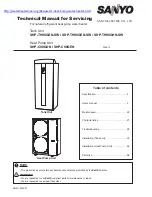
4
Installation of your water softener
WARNING: FAILURE TO MEET THE FOLLOWING REQUIREMENTS CAN CAUSE DAMAGE TO THE WATER
SOFTENER, OR RESTRICT ITS OPERATION.
We recommend your water softener is professionally installed.
Your installation must conform to water and electrical regulations
and local plumbing codes.
SPECIFICATION
• Maximum water temperature 49°C
• Maximum daytime working pressure 5 Bar
• Minimum working pressure 1.3 Bar
• Minimum system flow 0.06m³/hr
• Maximum system flow 3.18m³/hr
PRESSURE
Night time pressure will be much higher than day time pressure.
If day time pressure exceeds 5 bar, a pressure reducing valve should be
fitted. The water softener is tested to a maximum day time static pressure
of 8.5 bar, therefore the pressure reducing valve can be adjusted to a
maximum of 6 bar static pressure.
GRAVITY FED PLUMBING SYSTEMS
If the water flow is less than 1 litre per minute, for the water softener to
operate as originally designed we recommend a delayed action ball
valve is fitted within your storage tank.
UNVENTED OR COMBINATION BOILERS
The water softener and 22mm installation kit is compatible with unvented
or combination systems. All connections are included for the by-pass (two
15 mm reducers are included if required).
ELECTRICAL REQUIREMENTS
The water softener requires a 240 volt 50 hz electrical supply taken off a
power supply, not a lighting circuit. Power is supplied via a 24 volt 50 Hz
transformer. You must use the transformer supplied with the softener.
HARDWATER TAP
Fitting a separate hard water drinking water tap is currently
recommended by the UK Dept of Health and the UKWTA. Fitment of
a separate hard water drinking tap is only required in exceptionally hard
water areas (above 400 mg/l) where sodium content of the treated water
(increased due to the softening process) exceeds the level laid down in
the Water Supply (Water Quality) Regulations 2000. Drinking softened
water is not recommended for people on a low sodium diet or babies on
formula feed.
CENTRAL HEATING SYSTEMS
Central heating systems should always be treated with a suitable
corrosion inhibitor regardless of being filled with softened or hard water.
RECOMMENDATION FOR SITING THE WATER SOFTENER
- Install close to the rising main
- Keep drain point as short as possible
- Keep overflow to outside wall as short as possible with a constant fall
- Allow for any required hard water draw off points
- Place on a sound base
- Allow space above the valve cover lid for servicing (recommended 75mm)
- Protect the softener and all associated pipework against freezing, as
this could cause flooding
- Protect against condensation in enclosed areas
LEAD PIPEWORK
Where lead pipework exists downstream of the proposed location of the
water softener, we advise you to ask the local water authority for advice
on the replacement of lead pipework. Water softeners should not be used
with lead pipework.
Please Remember
– Only use tablet or pellet salt in your softener!
Содержание Ultra 9
Страница 6: ...6 WATER SOFTENER PLUMBING CONNECTIONS...





































